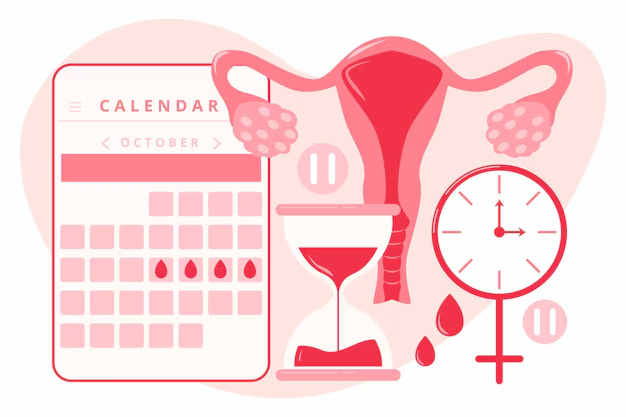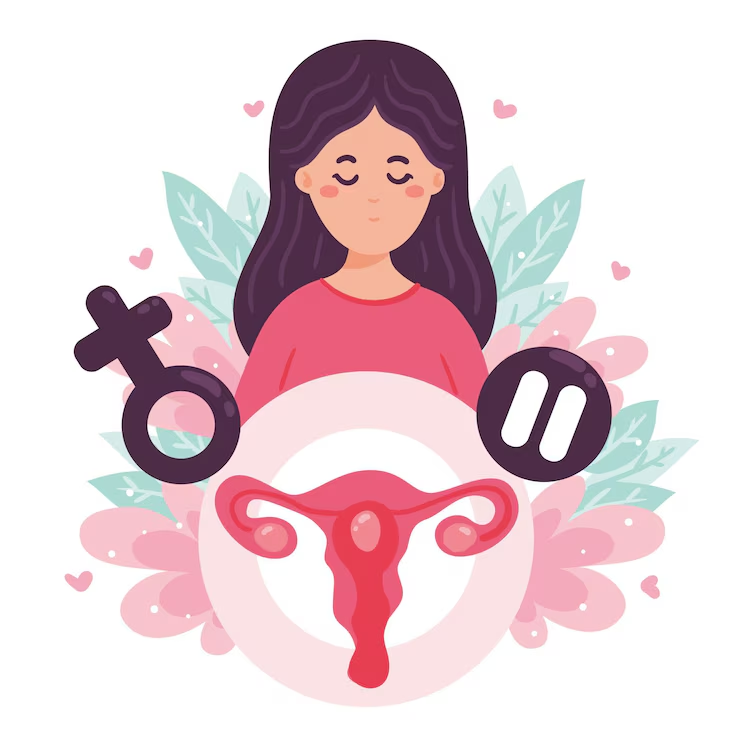How to Track Your Menstrual Cycle and Why It's Important

Tracking your menstrual cycle is one of the most powerful tools in understanding your body and maintaining your reproductive health. It can help you recognize patterns, identify any irregularities, and even give you valuable insights into your overall well-being. Whether you're looking to conceive, managing symptoms of PMS, or just trying to be more in tune with your body, tracking your menstrual cycle is key.
In this blog, we’ll explore why it’s important to track your cycle, the different methods for doing so, and how to use this information to improve your health.
Why is Tracking Your Menstrual Cycle Important?
There are several reasons why tracking your menstrual cycle is a smart practice. Here are some of the key benefits:
1. Predicting Your Periods
By understanding the length and regularity of your cycle, you can anticipate when your period will arrive, helping you prepare accordingly. This can be especially helpful for managing any discomfort or planning for activities during menstruation.
2. Understanding Your Fertility
Tracking your cycle can help you identify your fertile window—the time of the month when you're most likely to get pregnant. By tracking ovulation (the release of an egg from your ovaries), you can increase your chances of conception if you're trying to get pregnant.
3. Spotting Health Issues Early
Tracking can help you spot irregularities like missed periods, heavy bleeding, or painful cycles. These symptoms may indicate an underlying health issue like Polycystic Ovary Syndrome (PCOS), endometriosis, or thyroid problems, which can all affect your menstrual cycle. Early detection can help you get the right treatment quickly.
4. Managing PMS and Other Symptoms
Many women experience premenstrual syndrome (PMS) or other symptoms like bloating, mood swings, headaches, or breast tenderness. Tracking these symptoms in relation to your cycle can help you better manage and treat them, knowing when to expect them and how severe they might be.
5. Tracking Birth Control Effectiveness
If you’re using natural family planning or hormonal contraception, tracking your cycle can give you a clearer picture of how effective your method is. It can help you understand how changes in your cycle may be related to birth control and assist in addressing any concerns.
6. Recognizing Changes as You Age
Your menstrual cycle can change as you age, especially as you approach menopause. Tracking these changes can help you recognize when your cycle is starting to shift and when you might need to seek advice from your healthcare provider.
How to Track Your Menstrual Cycle
There are a few simple ways to track your menstrual cycle. Depending on your preference and lifestyle, you can choose the method that works best for you.
1. Use a Period Tracker App
There are many apps available that can help you track your menstrual cycle with ease. These apps typically allow you to input the start and end date of your period, any symptoms you experience, and other related data like mood, sleep, and energy levels. Many apps will predict when your next period will start and when you’re most fertile.
Some popular period tracker apps include:
- Clue
- Flo
- Ovia
- Glow
These apps also often allow you to log additional information, such as ovulation, cervical mucus, and basal body temperature (BBT), giving you more detailed insights into your cycle.
2. Manual Tracking on a Calendar
If you prefer not to use an app, you can track your menstrual cycle manually on a physical calendar or planner. Start by marking the first day of your period on the calendar. Count the days between the start of one period and the start of the next—this is the length of your menstrual cycle.
In addition to tracking the start and end dates, you can also note symptoms like cramps, mood swings, bloating, or fatigue. This simple method can help you notice patterns over time and give you a quick reference to assess how your cycle is progressing.
3. Basal Body Temperature (BBT) Charting
For those who want more detailed tracking, charting your basal body temperature is an excellent option. Your basal body temperature is the temperature of your body at rest, and it rises slightly after ovulation due to the hormone progesterone.
To track your BBT:
- Take your temperature every morning at the same time using a basal thermometer (which measures temperature to a more precise degree than regular thermometers).
- Record the temperature in a chart or app that’s designed for BBT tracking.
Tracking BBT helps you identify when you’re ovulating, making it useful for both fertility awareness and birth control.
4. Cervical Mucus Monitoring
Your cervical mucus changes throughout your cycle. It can help you identify when you’re most fertile. Around ovulation, cervical mucus becomes clearer, thinner, and more slippery, resembling raw egg whites. Tracking these changes can help you determine the most fertile time of your cycle.
You can check your cervical mucus by gently inserting a finger into your vagina and observing the consistency of the mucus. This can be done throughout your cycle to help you predict ovulation.
What to Track in Your Menstrual Cycle
Tracking not only the start and end of your period, but also other factors that affect your overall health can give you a better understanding of your body. Here's what to track:
- Menstrual Flow: Note whether your period is light, medium, or heavy. Keep track of how many pads or tampons you use per day, as well as any clotting.
- Cycle Length: Track the length of your cycle (the days between the start of one period and the start of the next). This can help identify irregularities.
- Ovulation: If you're trying to conceive or avoid pregnancy, tracking ovulation can help. You can monitor your temperature, cervical mucus, or use ovulation prediction kits to pinpoint ovulation.
- Symptoms: Track any symptoms you experience during your cycle, such as cramps, bloating, fatigue, headaches, breast tenderness, or mood swings.
- Mood and Energy: Many women experience mood fluctuations, energy changes, and emotional symptoms during different phases of the cycle. Keeping track of these can help you manage them better.
How Tracking Can Help Improve Your Health
By tracking your cycle consistently, you can:
- Identify Patterns: Over time, you’ll start to recognize patterns in your cycle. This will help you predict when to expect certain symptoms or when you're most fertile.
- Identify Irregularities: If your periods are irregular, excessively heavy, or painful, tracking will help you spot these issues early and take them to your healthcare provider for further evaluation.
- Empower Your Decisions: Whether you’re trying to conceive, managing birth control, or simply improving your overall health, tracking your cycle gives you control over your reproductive health decisions.
- Better Communication with Healthcare Providers: A detailed menstrual cycle record makes it easier to explain your symptoms to your doctor. It also helps your doctor make informed decisions about your care.
Related Articles

Baby development at 3 weeks

Baby development at 24 weeks

Understanding Your Menstrual Cycle: A Guide for Every Woman

Baby development at 26 weeks

Baby development at 41 weeks

How to Share the News: Announcing Your Pregnancy in the First Trimester

Baby development at 1 week

Baby development at 10 weeks